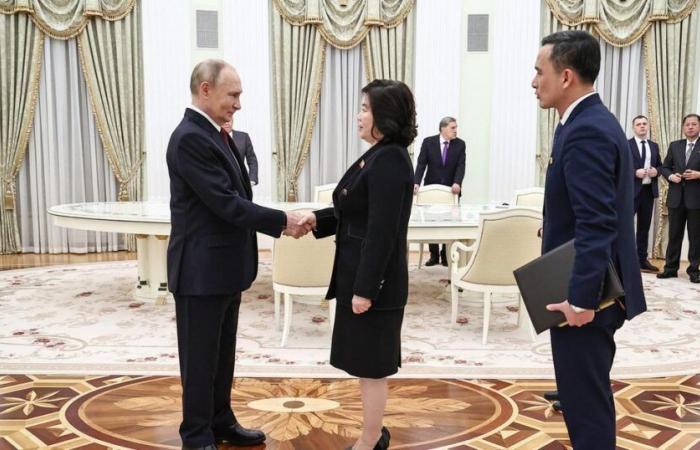UPDATE ON THE SITUATION – The West denounces the deployment of thousands of North Korean soldiers near the front in Ukraine.
Russian President Vladimir Putin met North Korean Foreign Minister Choe Son Hui in Moscow on Monday, as the West denounces the deployment of thousands of North Korean soldiers near the front in Ukraine. “Vladimir Putin received the Minister of Foreign Affairs of the Democratic People's Republic of Korea, Choe Son Hui, in the Kremlin”the Kremlin said in a statement. On Friday, she met her Russian counterpart Sergei Lavrov in Moscow.
Woman sentenced to 15 years in prison in Ukraine for helping Russia
A Ukrainian court on Monday sentenced a resident of the eastern Ukrainian city of Sloviansk to 15 years in prison for high treason for passing military information to Russia. Since the start of the Russian invasion in February 2022, judicial authorities in Ukraine have opened thousands of proceedings concerning suspicions of collaboration with Moscow's forces. “Following a public action carried out by the Regional Prosecutor's Office of Donetsk the court declared the citizen guilty of high treason (…) she was sentenced to 15 years in prison with confiscation of property”the Attorney General's Office said on Telegram.
According to the prosecution, this woman transmitted information between March and April 2024 on Ukrainian troop deployments to an acquaintance who served in the Russian army. She also, according to this source, gave the exact location of the Ukrainian forces stationed in Sloviansk, as well as the location of checkpoints in the region. In 2014, pro-Russian separatist forces supported by Moscow briefly seized this city before it returned to Ukrainian control. Sloviansk is today one of the last major urban centers in the eastern Donetsk region still under Ukrainian control.






